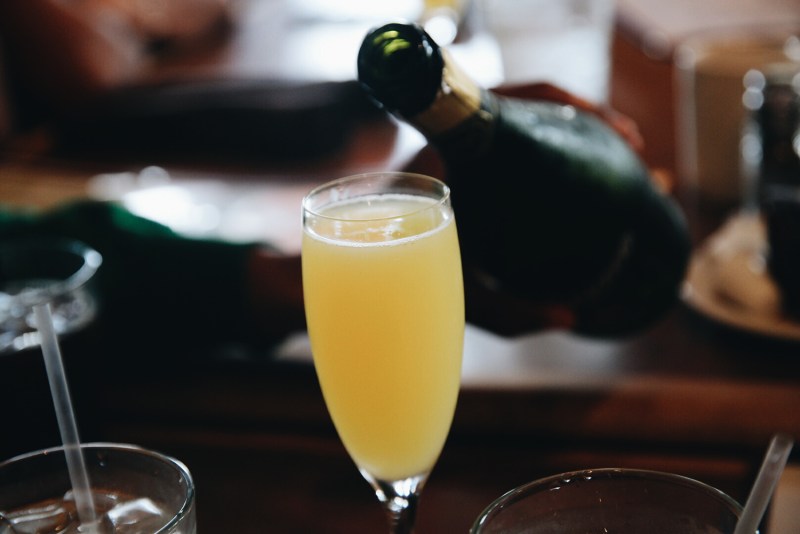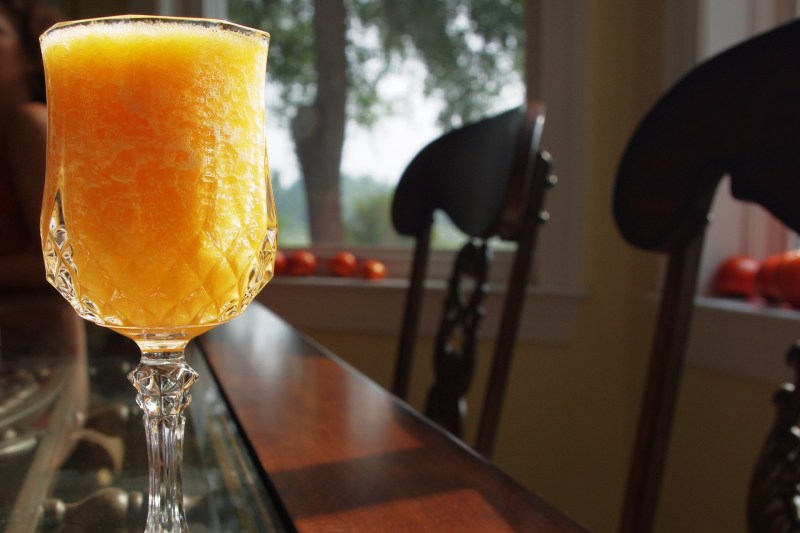
We know what you’re thinking: a magnificent mimosa? Is that a thing? Isn’t it just orange juice and cheap sparkling wine? Like most things, the mimosa can be vastly improved given the right helping of tenderness, love, and care.
The mimosa is widely considered a bottom-shelf cocktail. Many of us see it as both an excuse to drink before noon and a reason to buy the cheapest corner store bubbly one can. Well, this is when the record-scratch sound effect kicks in. Mimosas can be top shelf, provided you knock out a few important steps on the cocktail’s to-do list. Read on to learn how to make a mimosa.
Marygrace Sexton runs Natalie’s Orchid Island Juice Co., which specializes in fresh fruit juices, including an award-winning OJ. Unsurprisingly, Sexton says the key to a classy mimosa is fresh, high-quality ingredients.
“Let’s start with the sparkling wine,” Sexton said. “Most people mistakenly believe you have to use an expensive champagne from France, but that’s not always true. While a brut champagne will work, a Cava from Spain or a dry Prosecco from Italy are excellent.” The key is enhancing the flavor of the juice in question.
Next comes the juice. “Avoid the off-the-shelf, major brand juices as they have shelf-life stabilizers that dampen the flavor profile and are often over-pasteurized, leaving a flat and uninspired taste,” she explained. “It makes a world of difference when it comes to making or breaking the quality of your mimosa.”
What to serve it in? While vintage Champagne glasses are enjoying a renaissance, they tend not to hold on to carbonation quite as well. Sexton opts to go with a standard Champagne flute. “I prefer crystal as it is a little heavier and less prone to accidentally spilling over,” she said. “The flute not only preserves the effervescence of the bubbly, it also makes a dependable mixing guide.”
Temperature is fairly important, too, as is typically the case when dealing with carbonated beverages. Keep the bubbly cool by returning it to the fridge when it’s not being used or keep it in an ice bucket or insulated sleeve. Also, cap it properly when not pouring with a proper stopper.
While we don’t ever really recommend treating an expensive bottle of sparkling to juice (the high-end stuff is to be enjoyed on its own, people), we can suggest dialing back the juice ratio as the quality of the sparkling wine goes up. A shorter juice pour will still impart color and a bit of a citrus kick while allowing you to enjoy the flavor and texture of the wine.
And returning to the theme of class, we cannot overlook looks. “Presentation is also important, so be sure to top your glass with a garnish of your choice,” Sexton said. “I love a fresh berry, usually a blueberry or raspberry, but others might use a thin slice of orange or even lemon.”
Sexton’s ideal mimosa

With a mimosa, preparing the drink is less important than the ingredients. There’s no need for stirring or mixing (that will just dampen the carbonation), just combining and enjoying. A couple of solid juices are suggested here but we also encourage you to make your orange juice at home. For more flavor, swap the ever-common navel orange for a Valencia variety.
Ingredients
- 2/3 parts sparkling wine
- 1/3 parts orange juice (go with Natalie’s or Whole Foods organic)
- Orange slice for garnish
Method
- Pour all the ingredients into a Champagne flute.
- When the fizz settles, top with a bit more sparkling wine and garnish with a slice of citrus.
Try a bellini

If orange juice isn’t your thing, but you still want to serve a sparkling brunch cocktail, you should consider the bellini. This variation of the mimosa, which was invented in Venice in 1949, substitutes peach puree for orange juice and Prosecco for the traditional Champagne that is generally found in a mimosa. This recipe comes from the Spruce Eats.
Ingredients
For the peach puree
- 4 medium white peaches, pitted and sliced into quarters
- 3 ice cubes
- 1 teaspoon lemon juice (freshly squeezed lemon juice is preferred)
- 1/2 tablespoon sugar or 3/4 ounce simple syrup to taste
For the cocktail
- 2 ounces peach puree
- 4 ounces chilled Prosecco or sparkling wine
- Peach slice for garnish
Method
- Make the puree by adding the peaches, ice, lemon juice, and sugar (or syrup if using) to a blender or food processor.
- Blend until smooth. Taste and add more sweetener or lemon juice as needed.
- Pour 2 ounces of the peach puree into a Champagne flute.
- Slowly top with the Prosecco or sparkling wine, stirring gently to incorporate.
- Garnish with a peach slice and serve.


